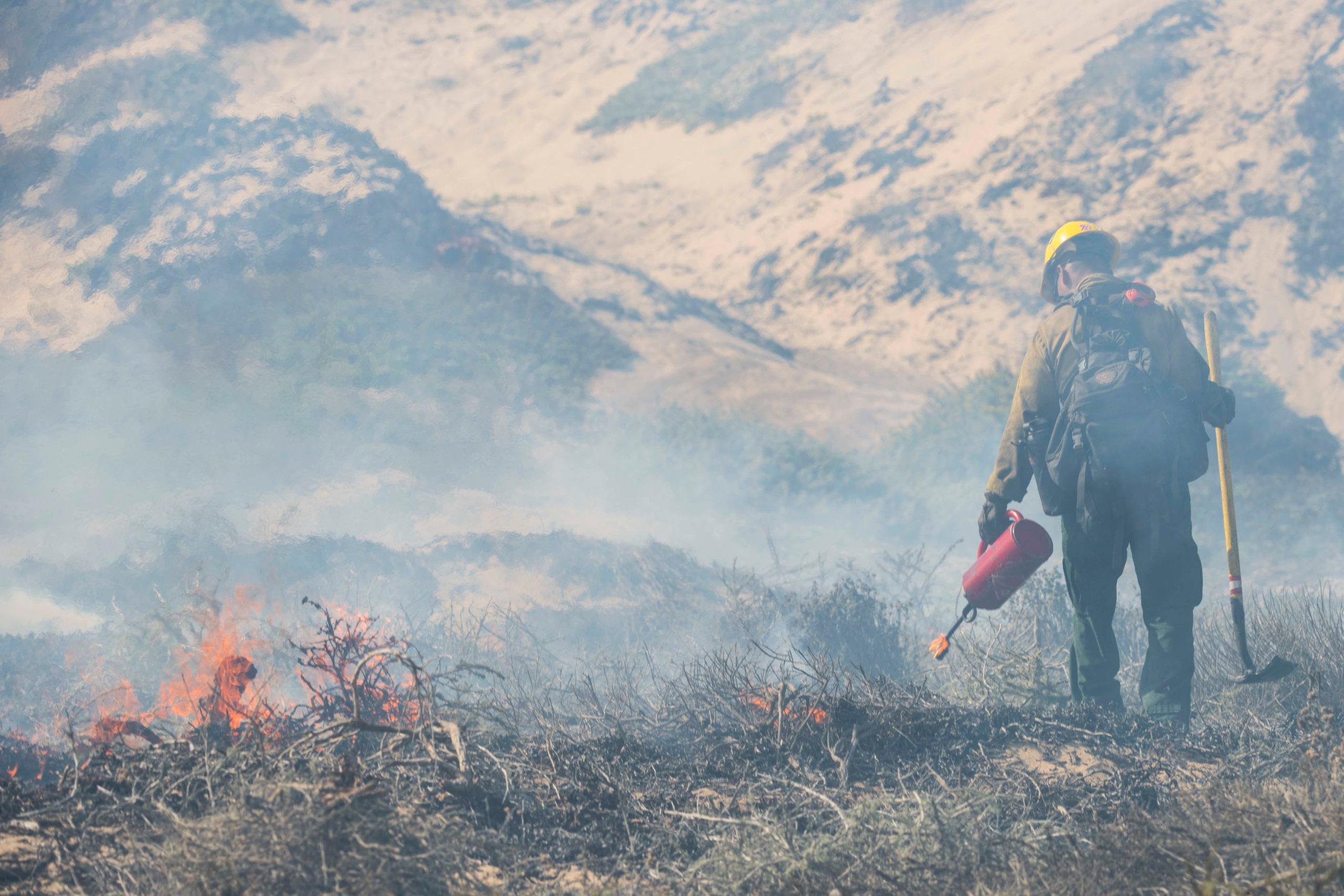
Any kind of wildfire is terrifying. But add military weapons, ammunition and chemical storage, and an apocalyptic blaze becomes a possibility.
Wildfires, exacerbated by climate change, are a growing concern for the Department of Defense as a threat to military installations around the world.
Fires like the one in September 2016 that ignited the dense, dry chaparral covering some of the 100,000 acres of Vandenberg Air Force Base in Santa Barbara County, California.
Video taken at the time shows a firefighter screaming "Let's go! Go!," as waves of embers blast his truck. Day turned to night as black smoke covered the sun, engulfing him and his colleagues as they hurried back to their safe zone roughly 600 yards away.
Worryingly near were military ordnance, chemical storage, and buildings crucial to national security. A little over a mile away, a Delta II rocket was ready to launch.
"Having a rocket fully loaded on a pad, fully fueled, that's a pucker factor," said Chief Mark Farias, a 20 year veteran of the Vandenberg Fire Department who helped fight the fire.
Ultimately, crews were able to contain the fire, though Farias said the Vandenberg Fire Department needed substantial additional resources from other local, state and national fire agencies.
The fire burned about 12,500 acres, relatively reasonable for a California wildfire.
But the concern that climate change will lead to more severe, more frequent fires is being taken seriously by military leaders.
A 2019 document titled, "Report on Effects of a Changing Climate to the Department of Defense," doesn't mince words.
"The effects of a changing climate are a national security issue," it begins.
"DoD must be able to adapt current and future operations to address the impacts of a variety of threats and conditions, including those from weather and natural events," the report said. "To that end, DoD factors in the effects of the environment into its mission planning and execution to build resilience."
The Pentagon report examined climate change-related threats at 72 U.S. bases around the world, examining such things as wildfires, droughts, flooding, and desertification, in which a formerly fertile soil becomes dryland.
"They have to take into consideration a changing climate," said Maureen Sullivan, Deputy Assistant Secretary of Defense for Environment.
The report said about half of the bases should consider wildfires an issue. Over the next 20 years, the Pentagon expects to add an additional seven bases to the list as the climate continues to change.
"You know we just had a huge fire this summer in Alaska … which was really problematic," Sullivan said. "You wouldn't think of Alaska as a wildfire risk, but that tells you how the wildfire situation is changing."
Bases need to determine their degree of exposure to changing climate conditions and their adaptive capacity, as well as write up integrated natural resources management plans. Those can help determine how the installation manages the land across the facility.
The Defense Department has provided them with tools to do so, said Sullivan.
For instance, it has developed a series of guidelines that can help bases figure out proper wildfire monitoring, how to address fuel management, and how to determine if certain parts of the base might be vulnerable to smoke or fire.
Bases already are clearing vegetation, especially with controlled burns, though some bases are limited by local laws. They're also partnering with local, state and national fire agencies.
Chief Farias at Vandenberg said the 2016 fire showed why his base needs better brush management, more people and more money.
"We haven't gained resources," he said. "Even though things have gotten worse, we're actually less people, less resourced."
This story was produced by the American Homefront Project, a public media collaboration that reports on American military life and veterans. Funding comes from the Corporation for Public Broadcasting.
Copyright 2020 North Carolina Public Radio – WUNC. To see more, visit North Carolina Public Radio – WUNC.9(MDEyMDcxNjYwMDEzNzc2MTQzNDNiY2I3ZA004))









